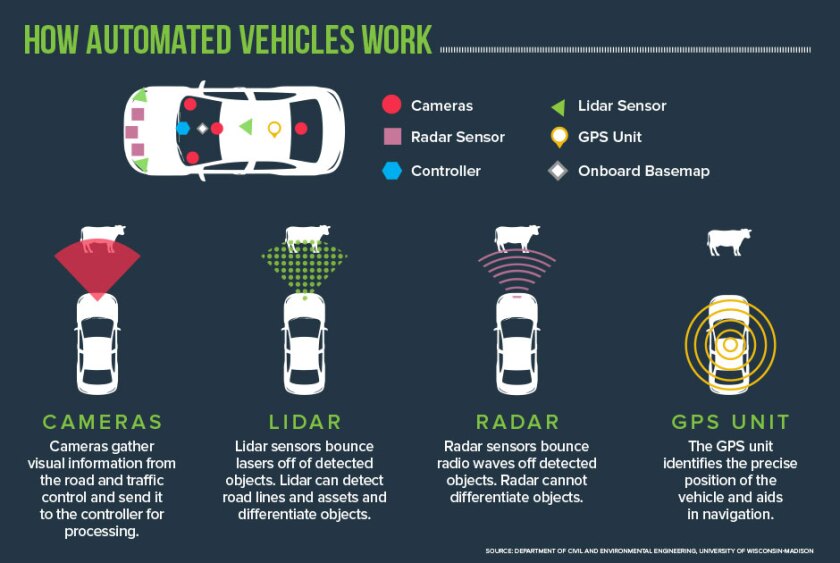AppliMarkets: Your Go-To Resource for App Insights
Explore the latest trends, reviews, and tips in mobile applications.
Steering into the Future: Why Your Next Car Might Drive Itself
Discover the revolution of self-driving cars! Find out why your next vehicle could pave the way for a smarter, safer future on the road.
The Rise of Autonomous Vehicles: What You Need to Know
The surge in autonomous vehicles marks a pivotal moment in automotive technology and urban transport. These self-driving cars utilize a combination of sensor technology, machine learning, and advanced algorithms to navigate and make decisions without human intervention. According to recent studies, it's estimated that by 2030, up to 15% of vehicles on the road could be fully autonomous, representing a significant shift in how we perceive mobility. As cities evolve and adapt to these smart vehicles, understanding their impact on traffic, safety, and infrastructure becomes essential for everyone.
One of the primary benefits of autonomous vehicles is their potential to reduce traffic accidents caused by human error, which accounts for over 90% of road incidents. Furthermore, these vehicles can optimize traffic flow through real-time data analysis, leading to shorter commute times and less congestion. However, the rise of this technology also raises critical questions about regulations, liability, and how these vehicles will coexist with traditional cars. As we move towards a future dominated by automation, staying informed is key to navigating the challenges and opportunities presented by this transformative technology.

How Self-Driving Cars Work: A Deep Dive into the Technology
Self-driving cars, also known as autonomous vehicles, operate using a combination of advanced technologies that enable them to navigate roads without human intervention. At the core of this technology are sensors such as Lidar, radar, and cameras, which continuously collect data about the vehicle's surroundings. These sensors feed information into sophisticated algorithms that interpret data, allowing the car to detect obstacles, recognize traffic signals, and understand road conditions. The artificial intelligence at play processes this information in real-time, enabling the vehicle to make informed decisions, much like a human driver would.
Another critical aspect of how self-driving cars work is the integration of mapping and localization technologies. These vehicles rely on high-definition maps that provide precise information about the road network, including lane markings and topographic details. Using a method called Simultaneous Localization and Mapping (SLAM), autonomous cars constantly update their position on these maps while navigating. Additionally, vehicle-to-vehicle (V2V) and vehicle-to-infrastructure (V2I) communication enhance the driving experience by allowing cars to share information with each other and traffic systems, improving safety and efficiency. As technology continues to evolve, the dream of fully autonomous driving becomes more achievable.
Is Your Next Car Ready to Drive Itself? Exploring the Future of Transportation
The advent of autonomous vehicles represents a paradigm shift in modern transportation. As technology continues to evolve, features like adaptive cruise control, lane-keeping assistance, and automatic emergency braking are paving the way for self-driving cars. Is your next car ready to drive itself? With major companies actively testing their autonomous driving systems, it’s only a matter of time before we witness widespread adoption. According to industry experts, by 2030, the majority of new cars sold could possess some level of autonomy, transforming the way we think about commuting and travel.
However, the road to fully autonomous vehicles is filled with challenges, including regulatory hurdles, technological limitations, and public perception. As we explore the future of transportation, it's crucial to address concerns regarding safety, cybersecurity, and ethical implications of relying on technology for driving. As advancements continue, consumers should stay informed and consider how these changes will influence not only personal mobility but also urban planning, insurance, and environmental impacts. Ultimately, embracing the future of transportation may lead to a safer and more efficient driving experience.